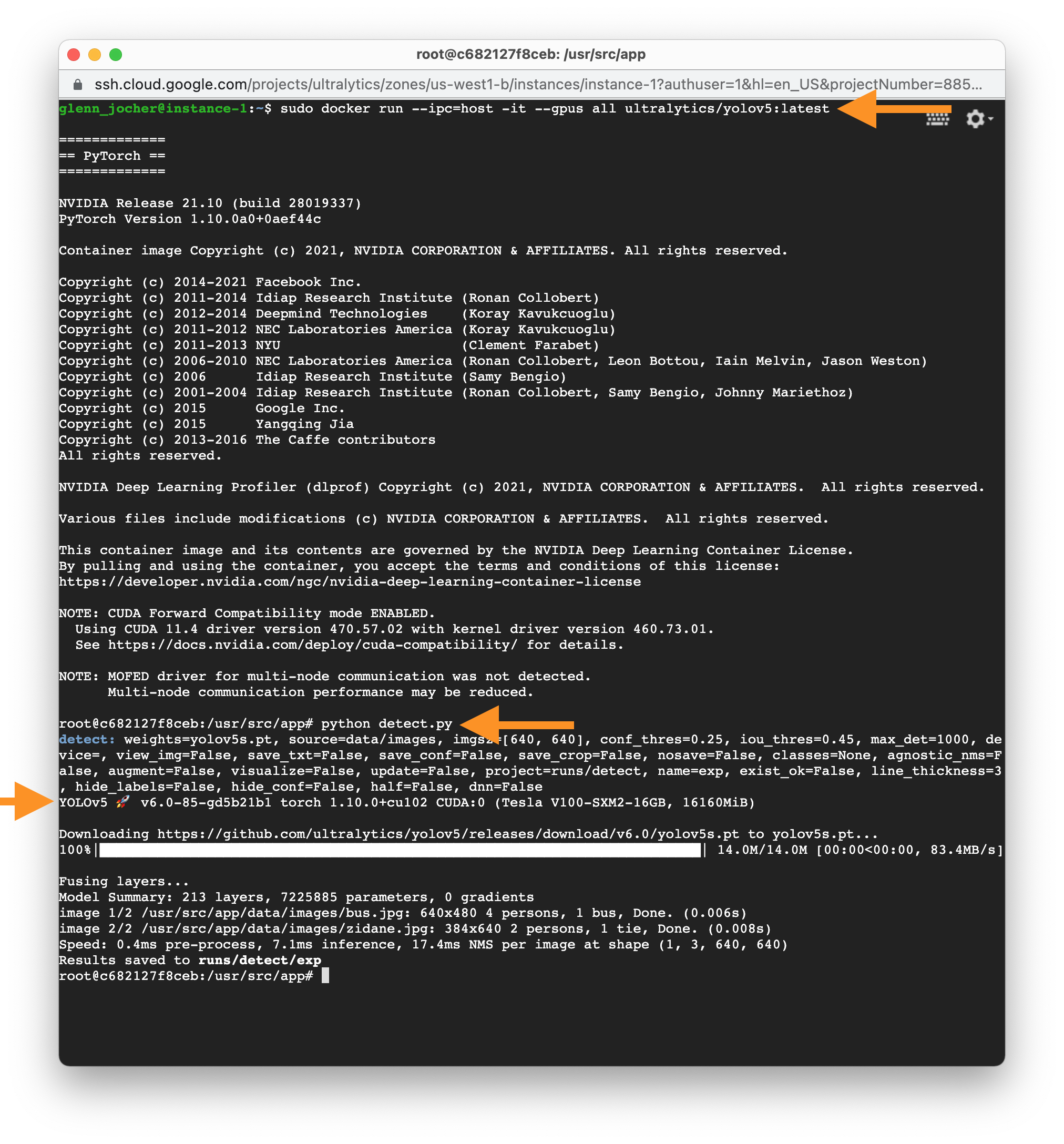-
-
Notifications
You must be signed in to change notification settings - Fork 3.4k
Docker Quickstart
To get started with YOLOv3 🚀 in a Docker image follow the instructions below. Other quickstart options for YOLOv3 include our Colab Notebook

Docker images come with all dependencies preinstalled, however Docker itself requires installation, and relies of nvidia driver installations in order to interact properly with local GPU resources. The requirements are:
- Nvidia Driver >= 455.23 https://www.nvidia.com/Download/index.aspx
- Nvidia-Docker https://github.com/NVIDIA/nvidia-docker
- Docker Engine - CE >= 19.03 https://docs.docker.com/install/
The Ultralytics YOLOv3 DockerHub is https://hub.docker.com/r/ultralytics/yolov3 
ultralytics/yolov3:latest image hosted on the DockerHub will always be in sync with the most recent repository commit. To pull this image:
sudo docker pull ultralytics/yolov3:latestRun an interactive instance of this image (called a "container") using -it:
sudo docker run --ipc=host -it ultralytics/yolov3:latestRun a container with local file access (like COCO training data in /datasets) using -v:
sudo docker run --ipc=host -it -v "$(pwd)"/datasets:/usr/src/datasets ultralytics/yolov3:latestRun a container with GPU access using --gpus all:
sudo docker run --ipc=host -it --gpus all ultralytics/yolov3:latestStart training, testing, detecting and exporting YOLOv3 models within the running Docker container!
$ python train.py # train a model
$ python val.py --weights yolov3.pt # validate a model for Precision, Recall and mAP
$ python detect.py --weights yolov3.pt --source path/to/images # run inference on images and videos
$ python export.py --weights yolov3.pt --include onnx coreml tflite # export models to other formats
© 2024 Ultralytics Inc. All rights reserved.
https://ultralytics.com






